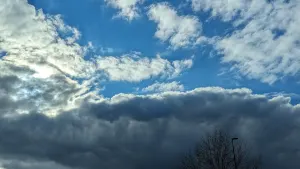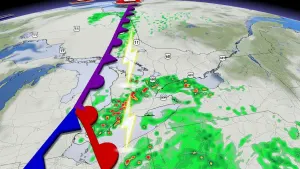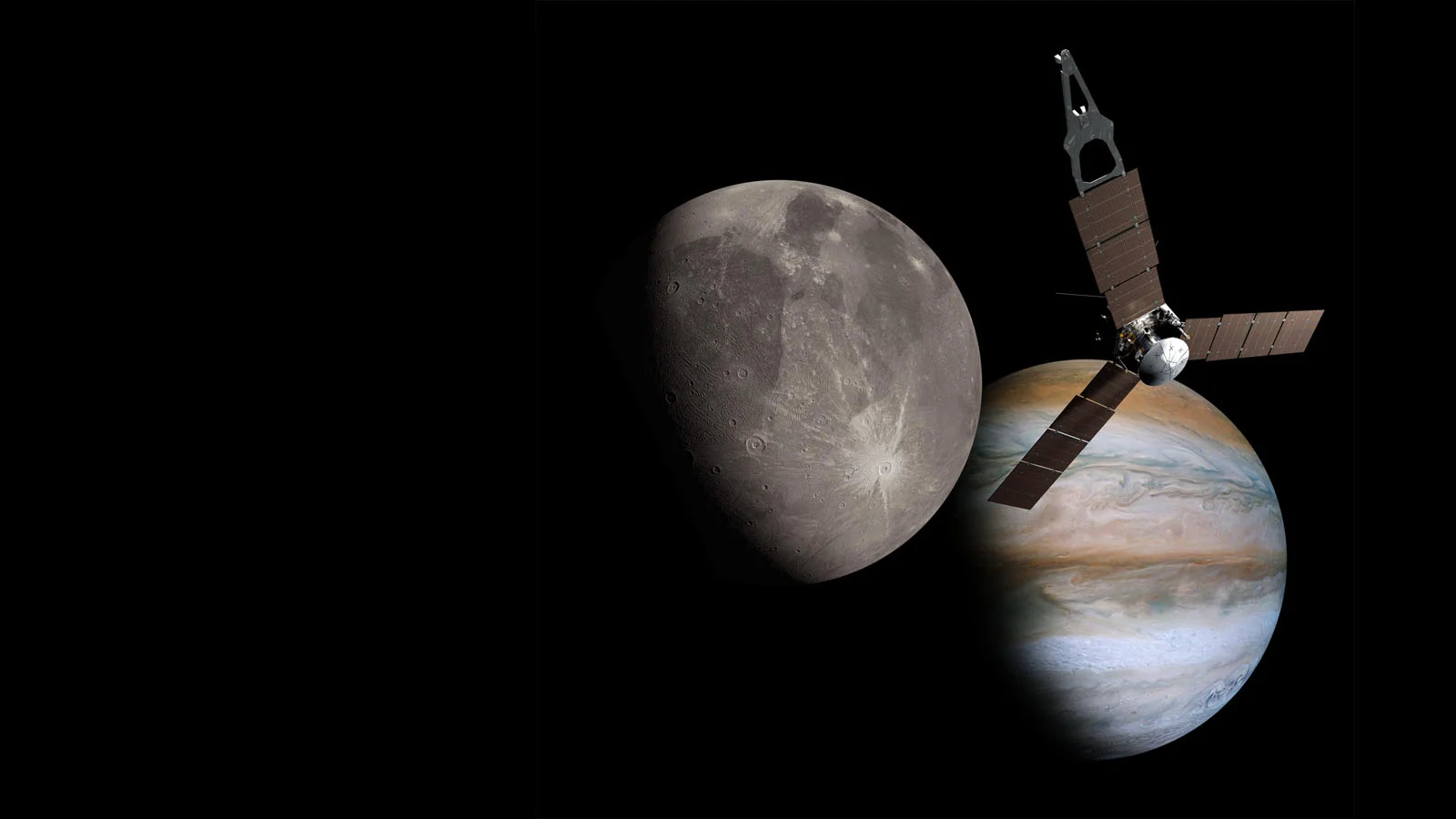
Check out our best look at Ganymede, Jupiter's largest moon, in over 20 years
Inspired fans of NASA's Juno mission are treating us to spectacular new images of the solar system's largest moon.
When the Juno probe made its latest swing around Jupiter earlier this month, the spacecraft flew past Ganymede, returning the best images of this immense moon we've seen since May 2000. Since then, fans of the mission have stepped up to produce some beautiful pictures of the solar system's largest moon.
NASA's Juno spacecraft has been orbiting around Jupiter for close to five years now. Up until recently, the probe's sole focus was the planet itself. It imaged Jupiter's cloud tops, measured its magnetic field, and took readings of the planet's core. When NASA renewed the mission in early 2021, however, they also expanded it. Now, Juno will also explore the largest of the planet's vast collection of moons.
The first such encounter was on June 7, when Juno flew past Ganymede, the largest natural satellite in our solar system.
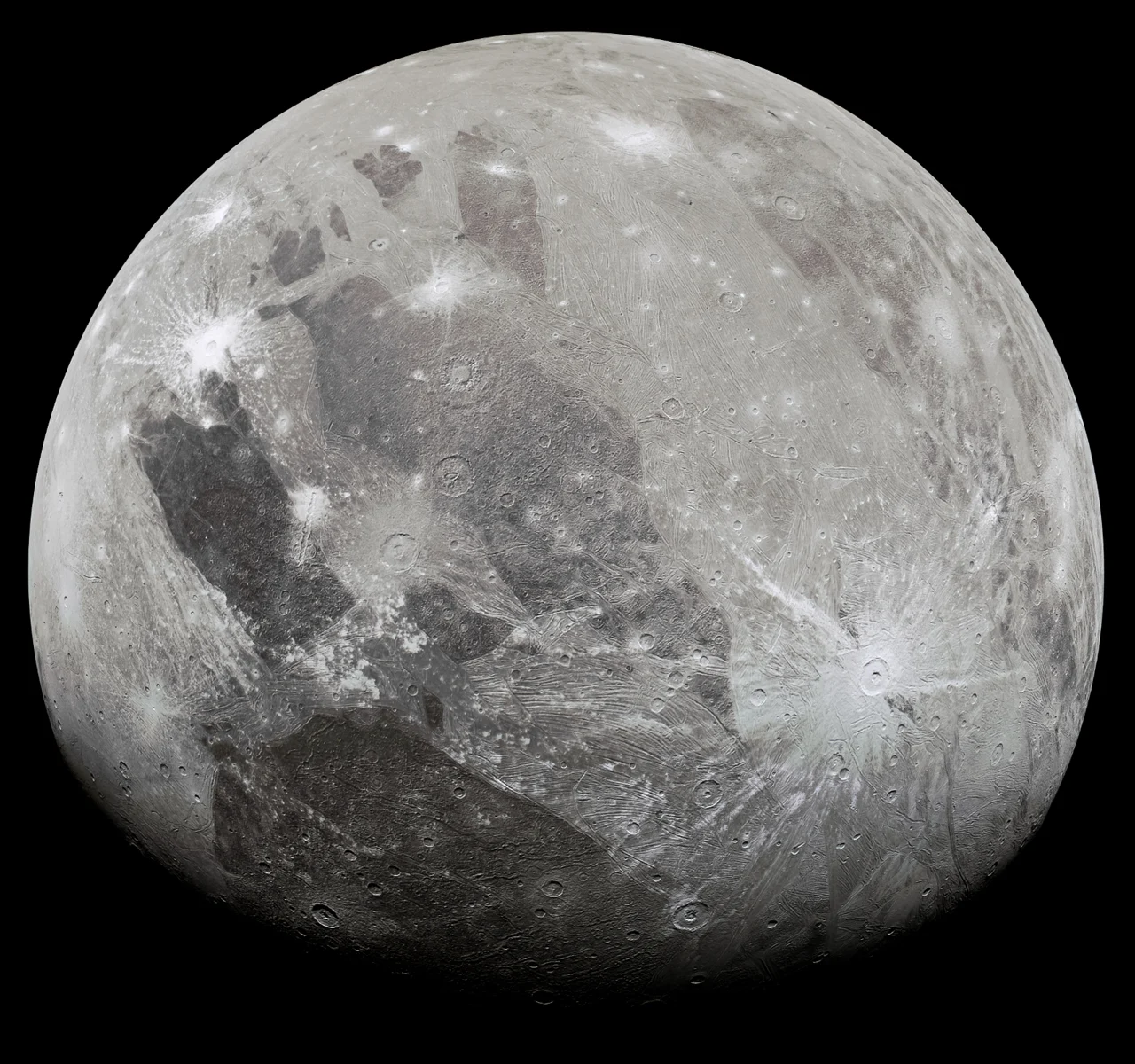
This image of Ganymede from the June 7, 2021 flyby was produced from raw Juno data by Kevin M. Gill, software engineer and data wrangler at NASA-JPL. Credit: NASA/JPL-Caltech/SwRI/MSSS/Kevin M. Gill by CC
"This is the closest any spacecraft has come to this mammoth moon in a generation," Juno Principal Investigator Scott Bolton of the Southwest Research Institute said in a NASA press release. "We are going to take our time before we draw any scientific conclusions, but until then we can simply marvel at this celestial wonder."
Bigger than the planet Mercury, Ganymede has been imaged close-up before. Both Voyager probes snapped pictures of it on their flybys back in 1979. The Galileo spacecraft took numerous images from the late 1990s to the early 2000s. New Horizons sent back new looks at it in 2007 as it swung past on its way to Pluto.
These latest images are not the closest look at Ganymede, either. While Juno came within 1,038 kilometres of the moon's surface on June 7, 2021, Galileo passed by at a distance of 1,000 km on May 20, 2000. Roughly four years earlier, on September 8, 1996, Galileo swung past at just 260 km above the surface. Still, Juno's cameras – JunoCam and the Stellar Reference Unit – captured some fantastic high-resolution imagery during this latest flyby.
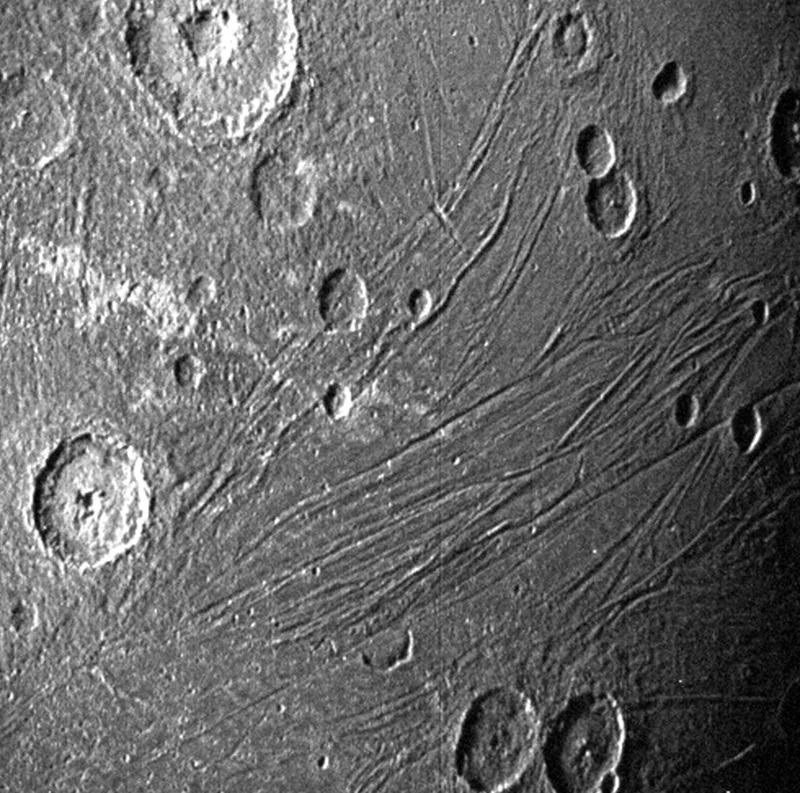
This image of the dark side of Ganymede was obtained by Juno's Stellar Reference Unit, the camera the spacecraft uses to orient itself using the stars, during its June 7, 2021, flyby of the moon. Credits: NASA/JPL-Caltech/SwRI
"The conditions in which we collected the dark side image of Ganymede were ideal for a low-light camera like our Stellar Reference Unit," Heidi Becker, Juno's radiation monitoring lead at JPL, said in the press release. "So this is a different part of the surface than seen by JunoCam in direct sunlight. It will be fun to see what the two teams can piece together."
During each close pass that Juno makes around Jupiter – known as a 'perijove' – the spacecraft's cameras snap hundreds of images. The science team at NASA's Jet Propulsion Laboratory (JPL) and the Southwest Research Institute (SwRI) posts these raw pictures directly to the web. Hosted on a dedicated JunoCam site, anyone from the public can download these images to play around with and produce something new.
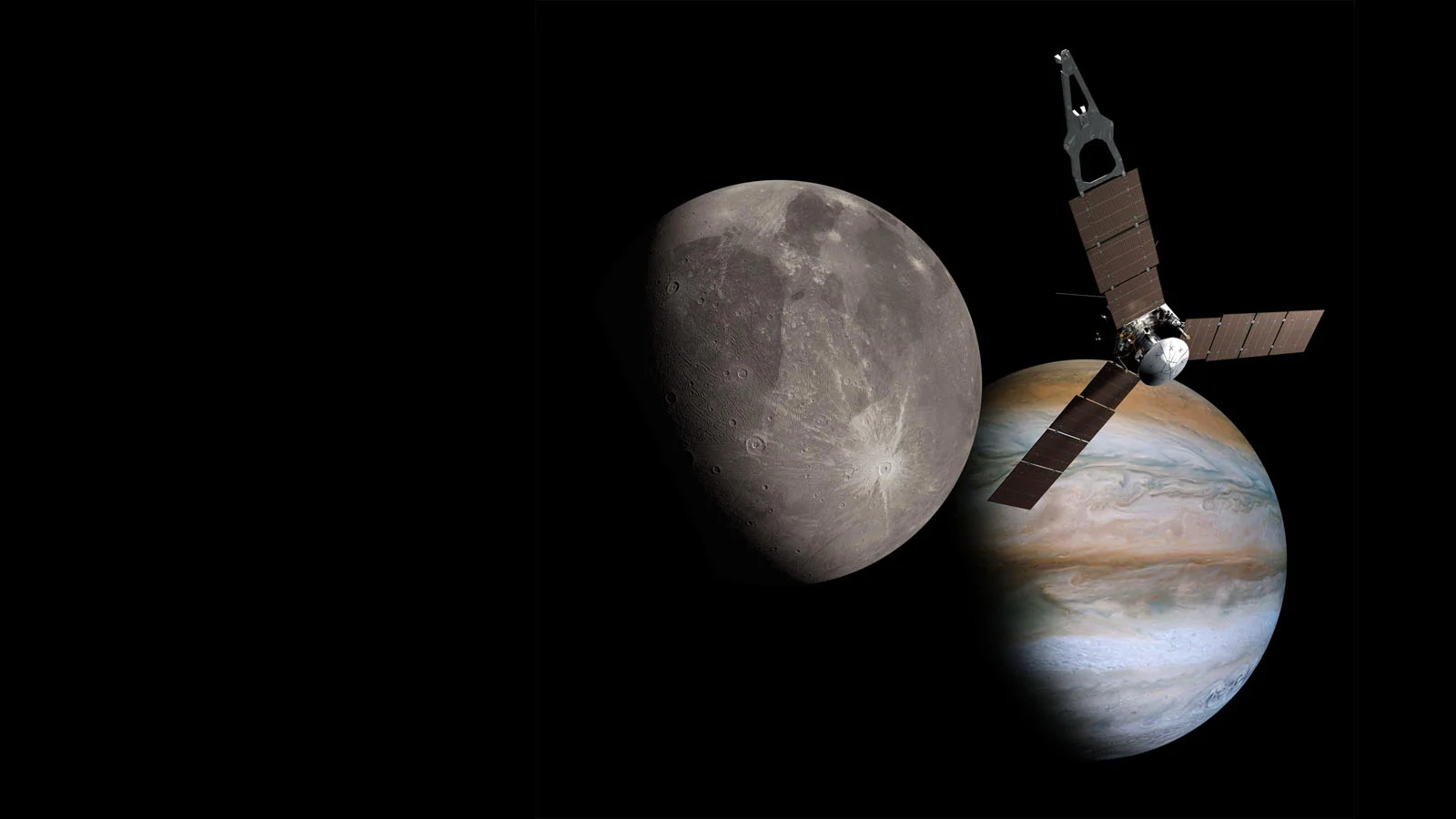
In this composite image, Kalleheikki Kannisto has combined a computer simulation of the Juno spacecraft with processed images of Ganymede and Jupiter that the spacecraft captured during its June 7 'perijove'. Credit: NASA/JPL-Caltech/SwRI/MSSS/Kalleheikki Kannisto by CC
According to NASA, this perijove 34 flyby of Ganymede kicked off Juno's schedule of moon encounters. In addition to snapping images and gathering science data about Ganymede, the spacecraft picked up a little orbital boost from the moon. This adjusted its orbit slightly, setting it up for the subsequent close encounter, which will be with Europa on September 29, 2022 (during perijove 45).
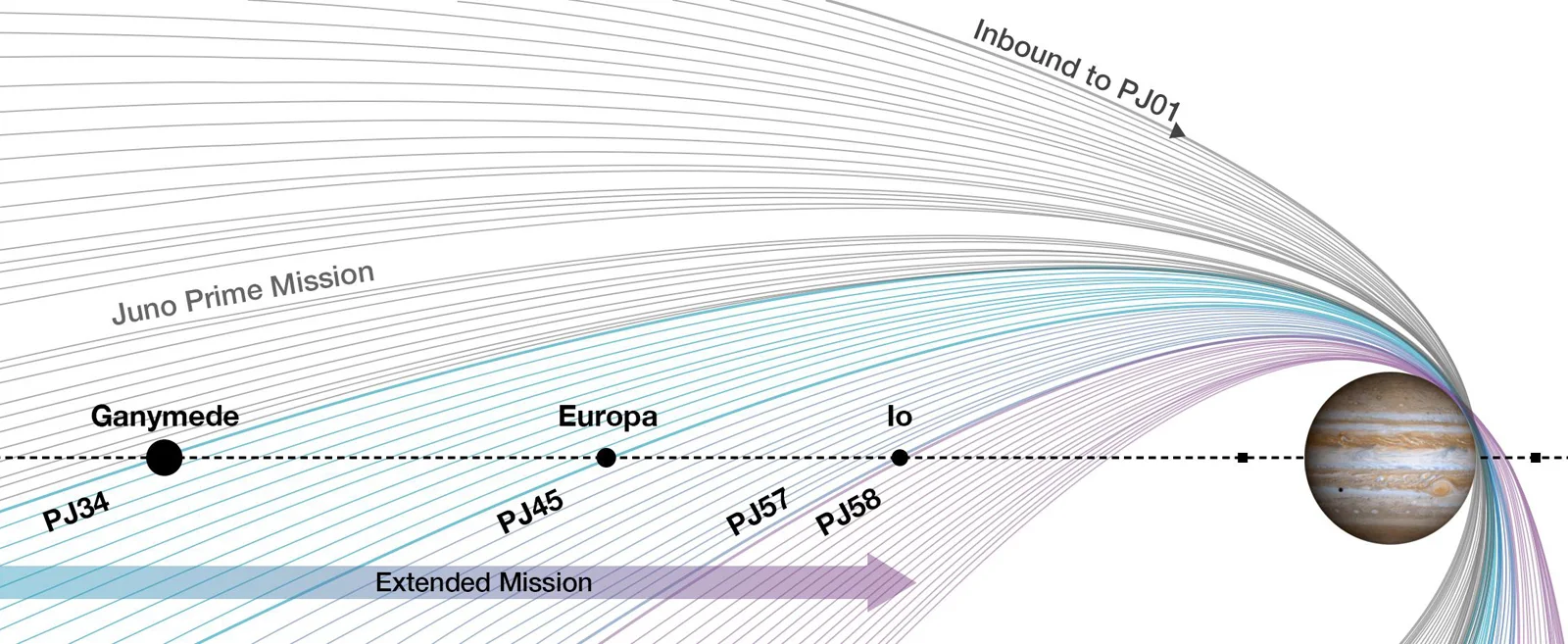
This graphic shows the orbital paths of Juno around Jupiter and past the three innermost Galilean moons, Ganymede, Europa and Io, during the spacecraft's extended mission. Credit: NASA/JPL-Caltech/SwRI
The Europa flyby will then put the spacecraft on course for a pair of close Io flybys on December 30, 2023, and February 3, 2024 (during perijoves 57 and 58). With Callisto being the farthest out of the four Galilean moons, it was apparently not in the best position for Juno at this time. We will have to wait for close-up pictures of that moon.







